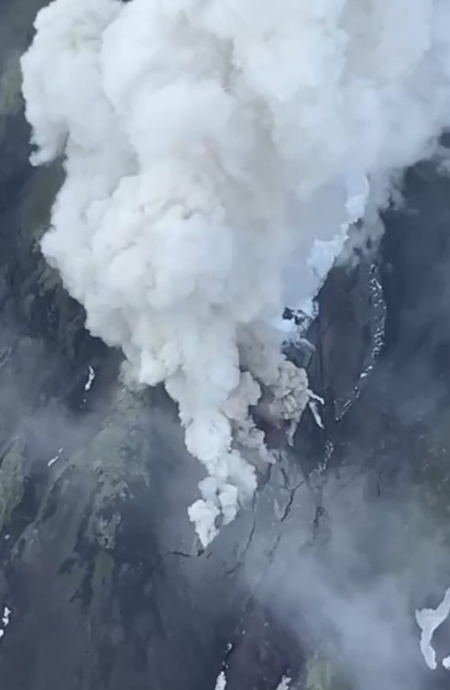The Klyuchevskoy volcano, situated in Russia’s far eastern Kamchatka Peninsula, erupted on Tuesday, shooting an ash cloud 7km above sea level and drifting southeast toward the Pacific Ocean, local authorities reported. Fortunately, the plume is not currently threatening any settlements, and no ash fallout has been detected in populated areas. Authorities also confirmed that there are no registered tourist groups near the volcano.
The Klyuchevskoy volcano has been given an orange aviation alert—signifying both ongoing intense activity and a potential hazard to air traffic. Volcanic activity intensified Monday, with the Kamchatka branch of the Russian Academy of Sciences recording four ash plumes, the tallest reaching up to 9km. Officials have cautioned that ash discharges of 6–10km are possible at several active volcanoes in the region and have urged people to stay at least 10km away from these sites.
Standing at 4,754m, Klyuchevskoy is Eurasia’s tallest active volcano. Its current eruptive phase started in April. The recent activity follows a massive 8.8-magnitude earthquake on July 30—the region’s strongest since 1952—which shook Kamchatka and the northern Kuril Islands, triggering an emergency in Severo-Kurilsk.
Scientists suggest a link between the quake and the uptick in volcanic eruptions. Alexey Ozerov, director of the region’s volcanology institute, noted that similar widespread volcanic activity was last seen in 1737 after a major earthquake. Yury Demyanchuk, a veteran volcanologist, observed that eruptions are currently underway at multiple sites, including both summit and central vents on Krasheninnikov Volcano—a phenomenon that may point to intensified underground seismic activity.
Demyanchuk added that the previous eruption of Krasheninnikov occurred around the 15th century, based only on ash deposits in geological layers. He described the recent spate of eruptions—including those at Avachinsky, Bezymianny, Kambalny, Karymsky, Klyuchevskoy, and Krasheninnikov—as “truly unique natural phenomena” not witnessed in centuries.

